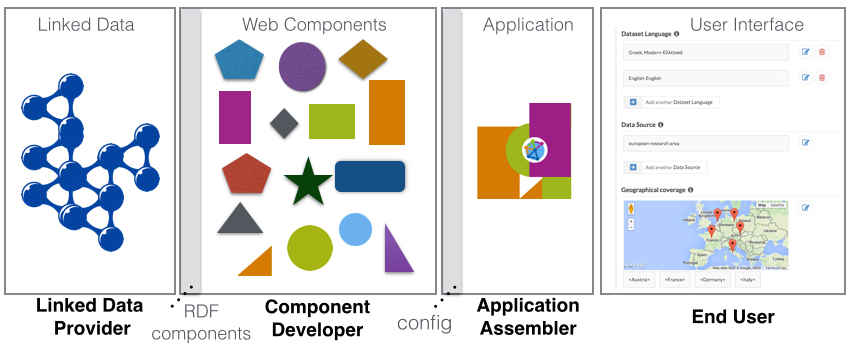User Interface as first class citizen.
In recent years, we have seen quite some progress on the backend side of the Semantic Web (i.e. in representing, extracting and storing Linked Data, querying, reasoning over data, interlinking data, etc.). However, little attention is paid to the end-user applications of SW and Linked Data.
Currently, SW user interfaces are not standardized and often do not function consistent with user expectations. Inconsistent UIs are hard for users to master and will impel a cognitive load for the users. For example, we usually see a same control used to perform diff
erent actions on different applications, which makes it impossible for users to apply what they have learned and predict the outcome. LD-R exploits ReactJS to enable building reusable UI components for SW applications. Focusing on UI components, will enable developers to concentrate more on the standardization of SW UIs and applying best practices on SW applications.
